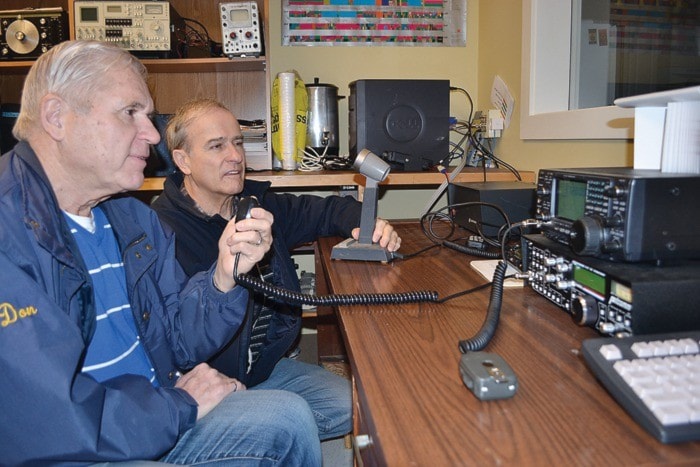What do you do when the lights go out...and the telephone does not work and your neighbour says that roads are blocked because of the earthquake, or flood, or wildfire?
Luckily you have a cell phone, you think, so better check on your family...hmm! Can't get through, better keep trying.
This is a scenario that is easy to imagine and most of the time, yes, you eventually get through, the power and telephone are restored after a few hours – or days – and it is something to make a story of later.
But what if it is a widespread catastrophe like Katrina, or Sandy or the wildfires in the Okanagan a few years ago, when many thousands of people had to be evacuated?
"I guess we'll just hunker down and manage as best we can until government help arrives," you think.
You may be surprised to learn that government help could be as close as one of your neighbours; if they are emergency volunteers.
Municipal and district emergency plans form the backbone of disaster relief so that the local emergency coordinator can rapidly mobilise volunteers and direct resources as needed.
Volunteers in Emergency Support Services (ESS) practise to run reception centres for evacuees, track family members and provide immediate support in the way of food, clothing and lodging when necessary. In the Okanagan it was volunteers who handled all the evacuees.
If you are burned out of your house in the middle of the night you may find yourself the next day, dressed in clothing supplied by ESS, shopping with a voucher for essential clothing or food and being lodged free for the next couple of days to give you time to make firm arrangements.
This happens a number of times each year and for people, without family or friends nearby, ESS can be a lifesaver.
Going back to the person with the cell phone, unfortunately that time it was a large scale disaster, work crews were overwhelmed and it took some time before help could arrive from outside. The cell phone system got overloaded with the number of calls and after a few days, the backup generators for phones began to run out of fuel and crews were unable to reach the communication towers to refuel them. When help did arrive there were problems communicating with some areas so they had to wait longer for relief.
Hospitals had their own supply problems since it was not practical to keep large stocks of medical supplies in reserve.
Communications and supply lines are so efficient now that we expect next-day delivery of all kinds of supplies even if something has to come hundreds of kilometres.
We forget that, in our area, there are only a few roads on which we depend to bring almost everything to us. If they are cut we must be prepared to depend on our own resources for some time.
Amateur (ham) radio is a new focus of attention for emergency communications since it is the only long range system which does not depend on the infrastructure of phone towers, satellites and landlines. In Strathcona Regional District, ham radio volunteers with the Campbell River Amateur Radio Society (CRARS) work with the other agencies under the Strathcona Emergency Plan in which Campbell River is a partner.
More radio operators are needed, both to work from home as neighbourhood contacts and to help with communications at the operation centre and reception centres in an emergency.
An amateur radio license is good for life but requires training in radio theory and operation since qualified hams have widespread privileges in terms of the power and frequencies they may use. Morse code is no longer required.
An evening course for the basic licence will start in Campbell River on Jan. 14. Call 250-830-1088 or 250-285-2297 for details.
ESS Campbell River is at 250-923-7197 and there are ESS groups in most communities if you would like to assist in emergency preparedness.
For more information about CRARS, visit www.ve7crc.org
